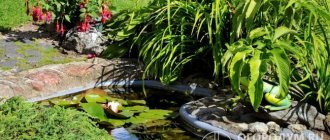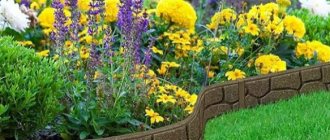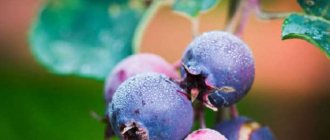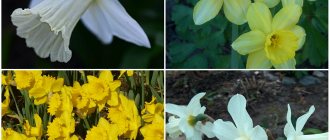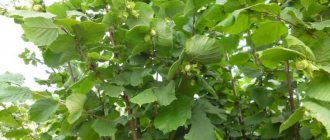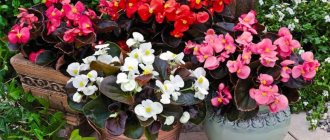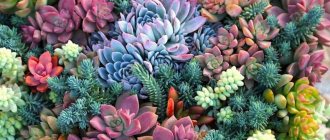Gardeners who have shadberry growing in their garden plots already know all the beneficial properties of the fruits of this amazing and unpretentious plant. They are not only consumed fresh, but also dried, like raisins, jams, jams, compotes, juices, gravies for meat are prepared from the berries, added to culinary masterpieces, and also used to create medicinal products for various diseases: internal and skin. Many gardeners want to create a nursery of irgi or plant several species and varieties on their site by propagating the plant.
The process of self-propagation of irgi may seem long and complicated, and economically unprofitable, but for real professionals there are no barriers. Having overcome all the difficulties of the process, they share with beginners their experience and knowledge on how to propagate shadberry using seeds, suckers, green cuttings, layering, grafting and dividing the bush.
Features of reproduction
The peculiarity of plant propagation is that cross-pollination is not necessary for it. Irga is characterized by apomixis during seed formation, that is, reproduction without the sexual process. For breeding serviceberry by species, it is apomixis that plays an important role: the seed embryo can develop without fertilization, and the species will be uniform. In other words, the embryo and endosperm develop, the sexual process is completely absent, thus asexual reproduction does not depend on pollination. The new shoots from the seeds will develop the characteristics of the mother shadberry.
Beneficial features
Saskatoon contains sugars (glucose and fructose) and some organic acids. When the berries ripen, vitamin C accumulates in them in large quantities. The fruits are also rich in vitamins A, B, B2, carotene, mineral salts, tannins, microelements - manganese, copper, iodine, iron, cobalt.
Irga is used to make homemade wine, candied fruits, jam, jelly, preserves, compote, and marshmallows. Berries can be frozen, canned, or dried. The juice can be easily squeezed out a week after picking the berries. Irgu is often used as a substitute for raisins.
The valuable substances included in the composition make the plant medicinal. The juice helps prevent blood clots. The berries are prescribed for the prevention of ulcers as a fixative. The fruits are used to relieve inflammatory processes in the oral cavity, to treat sore gums, and for eye diseases. Saskatoon berries are no less useful for disorders of the gastrointestinal tract.
Irga is a unique plant that has many beneficial properties. With proper planting, cultivation and care, you will be able to get a healthy plant that will delight you not only with tasty and juicy berries, but also with an attractive appearance, which allows you to decorate your garden or area near your home.
0
0
Copy link
Seed method
Before growing shadberry from seeds, they must be thoroughly washed with cold water to separate the remaining pulp and unripe seeds: they will float to the surface in the container. This should be repeated several times so that only mature and full seeds, 3.5-4 mm in size, remain at the bottom of the vessel. They are curved, sickle-shaped and brown in color. 1 g contains approximately 170 seeds or even more.
Reproduction of irgi by seeds should be carried out as follows:
- Select large and ripe (soft) berries and extract the seeds from them, rinse and dry (but do not overdry, otherwise they will go into a dormant state and sprout only in a year).
- Fertilize the beds and sow the seeds to a depth of 1.5-2 cm on single-line paths or fertilized beds with transverse furrows. The furrows should be watered and mulch should be spread on top: straw or dry leaves. The distance between the grooves is 18-20 cm.
- You will need 2 g of seeds per 1 linear meter. Picking begins in the phase of appearance of 3-5 leaves.
Sowing time
Before sowing the seeds in the spring, they are subjected to stratification for three winter months, keeping them, for example, in the refrigerator. They are mixed with moistened sand in a ratio of 1:2 or laid out on damp cotton pads and placed in a plastic container, then placed in the refrigerator away from the freezer, where the temperature reaches 0-2°C.
If the seeds are sown in the fall, then during the winter they undergo natural stratification, and sprouts appear the next year in the spring, some in the fall. Areas with seeds need to be periodically watered, weeds removed, and fed with nitrogen fertilizers. Then up to 70% of the sprouts will hatch, and they will grow 10-12 cm in height over the year. In the autumn of the second or even third year, when the sprouts reach a height of 30-35-50 cm, they can be planted in a permanent place in the garden.
How to plant sprouts
It is important to know . Serviceberry sprouts are dug up from seeds immediately before planting in a permanent place, so as not to dry out the weak root system. Due to their excellent frost resistance, seedlings are selected for locations exposed to cold winter winds. Mature trees will later serve as hedges, protecting plants such as raspberries, gooseberries or currants and other crops that cannot withstand cold drafts.
Saskatoon is planted in prepared soil, like all berry bush plants, 5 cm deeper than in the garden bed. At the same time, the branches are cut to 4-6 buds. The feeding area should be 4x4 - 4x6 meters, the row spacing should be 5x3 meters. If there is a shortage of space in the rows and between them, you can leave a distance of 1.8 m. For three years, you need to promptly loosen the soil and apply fertilizers at the same rates as for currants.
Fruiting can begin in the 4th year, then the bushes need to be tied with hoops made of some materials, for example, bird cherry, so that the shoots do not bend under the weight of the fruit. Once the trunks of the bushes or main branches of the tree become stable, tying with hoops will not be necessary.
Recommendation . Only 2-3 root shoots are left around the bush every year, the rest are removed. In total, an adult bush should have up to 10-15 trunks. Irga grows quickly and can reach a height of more than 6-10 meters. Therefore, to make it more convenient to harvest berries, you need to periodically rejuvenate the plant, maintaining the height - up to 2-2.6 or 3 meters.
Pruning irgi in spring - types and sequence of actions
Fruit trees and shrubs grow in every dacha, and now you can increasingly see shadberry among them. It is good for our health and produces stable harvests even in the most unfavorable and cold years. Currants, raspberries, apple trees and cherries may freeze, but the serviceberry will still bear fruit, helping to make supplies for the winter. If you don’t have this shrub growing yet, we advise you to plant it. Well, today we will talk about an important technique - pruning serviceberry in the spring, which has its own important meaning.
On a note! Irga is a unique shrub; it does not freeze even at -50 degrees, and produces apple-like fruits on the poorest soils. An unpretentious fruit shrub can also have a decorative function.
Spring pruning of irgi - why is it so important?
To begin with, we would like to note the importance of an agricultural technique called pruning. After all, you can so often come across dachas or private houses where trees grow on their own, turning into an incomprehensible green, shapeless mass. And the owners are surprised, saying that the harvest is not at all what it was, and they probably need to cut down a tree or bush. But is it really possible to rush so much without ever pruning? Today we are talking about shadberry. And it grows quickly and intensively, risking turning into such an obscene and shapeless bush that will take up a lot of space and spoil the decorativeness of the landscape.
Root shoots for propagation
How irga reproduces by root shoots:
- dig up last year’s shoot, 0.5 cm thick (at least) and 10 cm long, with a developed root system;
- prepare the holes and plant them vertically to a depth of 5-7 cm in moist soil;
- The soil around the sprouts is moistened at regular intervals.
Etiolated shoots for propagation
When propagating irgi, etiolated (bleached) shoots are often used to speed up root formation. Tissue etiolation occurs during shoot development in the absence of light. The mother shoots are planted in a row every 30-50 cm. Next year, the shoots are trimmed to soil level in early spring or late autumn (during the dormant period) and covered with black film. The plant is kept under the film for 4-6 weeks until new shoots 10 cm high appear. To ventilate the plant, the film is secured to arched wire structures to form an awning (tunnel). Then tubes with a diameter of up to 5 cm or bamboo sticks are inserted into the tunnel.
Then the covering film should be cut on the north side in the form of triangular windows to provide access to light, the production of chlorophyll and the acquisition of green color by the tips of the shoots. In this case, direct sunlight should not fall directly on etiolated sprouts. This method is reminiscent of propagation using vertical layering. After 8 days, cuttings are prepared and the film cover is removed so that the plants do not die from the heat.
Raising the crown
If you want the serviceberry to turn into a real tree, you can raise the crown; this procedure must be performed in autumn or winter. Cut off the lowest branches to give the shrub a more tree-like shape. Don't cut branches too close to the trunk. It is better to leave as many main branches intact as possible on the tree.
Thick branches must be cut down in stages. Start by making a large cut on the underside of the branch. This prevents the bark from being torn off when the cut is completed. The main branches to be removed should be cut off at a distance of approximately 10 cm from the trunk, while for thinner branches 5 cm is sufficient. The remainder can be removed later.
Cuttings for propagation
Cuttings of serviceberry are carried out on annual growths, 12-15 cm long, as follows:
- The shoots are cut off (the tops of developed bushes), the lower leaves on the cuttings are removed and 2 pairs of upper ones are left.
- The cuttings are immediately placed in a container with water, but only after the lower sections have been treated with root-forming stimulants such as Kornevin or Fiton.
- Prepare greenhouses or well-drained pots with soil: the thickness of the bottom layer of the substrate 30-40 cm should consist of pebbles. Lay light soil and humus on top in a layer of 25 cm, and then pour sand in a layer of 4-5 cm.
- The cuttings are washed and planted at an angle, watered using a fine sieve. Cover the frame with film, the dome of which should be at a distance of 15-20 cm above the cuttings.
- When propagating by cuttings, you need to choose deep pots for shadberry. Then the roots will grow downward, and not weave into a ball, as in small containers.
- They create high air humidity (up to 95%) for the formation of adventitious roots on the cuttings, which will happen after 20-25 days.
- Cuttings with roots can be planted in the garden next spring, and in the fall - in a permanent place.
In order for the cuttings to overwinter, they can be left in the bed where they took root, dug in, provided with mulch of peat and wood chips, and planted in a permanent place in the spring. In autumn they are well watered and weeded.
Important . When cutting shadberry from cuttings, a temperature must be created inside the greenhouse (greenhouse) not exceeding + 25°C. To prevent the green cuttings from overheating and the temperature not exceeding + 25-40°C, the film is periodically opened slightly for air exchange or ventilation is created using tubes.
How to water cuttings
To create high humidity and keep the soil moist, it is recommended to install an automatic irrigation system. Water should be supplied in doses according to the following schedule:
- during the first month – every 5 minutes – 20 seconds;
- during the second month - every 7 minutes - 20 seconds;
- until the root system is formed - every 10 minutes during the day - 20 seconds;
- after the formation of roots - 2 times a day, the shelter is opened during the day;
- Fertilize with solutions: NPK fertilizer (20-20-20) + water - once every week.
Important . It is necessary to ensure that due to high humidity the soil surface is not overgrown with algae. If they appear, then you should purchase a special preparation from the store for treatment and remove the cover.
When planting cuttings with a strong fibrous root system in a garden bed for growing, after engraftment they should be fed with a mixture of: slurry (1 part), water (6-8 parts). Or dilute ammonium nitrate in a bucket of water - 30 g. Further care for cuttings is the same as for adult plants. A year later, in spring or autumn, they can be planted in a permanent place.
Diseases, pests and prevention
Irga is a plant that is characterized by good health. But sometimes shrubs are exposed to certain diseases and pests:
| Name of disease/pest | Symptoms | Fighting methods |
| Tuberculariosis | The leaves of the plant turn brown, then dry out and fall off. Then the branches begin to dry, small red bumps form on them. | Having detected symptoms of the disease, the diseased branches are cut off and burned, and the plant is sprayed with Bordeaux mixture or copper sulfate. For prevention, it is recommended to spray the plant in the spring. |
| Phyllostictosis spot | The disease manifests itself as leaves wilting and brown spots form on them. | To combat the disease, the leaves are burned, and the plants are treated with Bordeaux mixture before and after flowering. |
| Gray rot | Spots begin to appear on the leaves and spread quickly. Then the leaves turn yellow, then become covered with fluffy gray mold, and eventually disappear altogether. | Usually the cause of the disease is excess moisture, so the cause is initially eliminated. If this is not possible, it is recommended to transplant the plant to another, less humid place. Bordeaux mixture is used for treatment and prevention. |
| American shad | The pest penetrates the fruit and eats the seeds, after which it pupates there. | Karbofos or Fufanon will help fight the parasite. |
| Moth | It causes damage to the leaves of the plant, causing them to dry out and fall off. | Karbofos, which is sprayed with shadberry, will help get rid of the parasite. |
Dividing the bush
If there is a need to replant a 6-7 year old shrub of serviceberry, then it can be divided for the purpose of propagation. Irga is not transplanted after 7-8 years of age. Carry out the work in early spring before sap flow and swelling of the buds or in the fall 25-30 days before persistent frosts appear. The bush is removed, the roots are freed from the ground, the rhizome is divided into parts, if necessary, with the help of an ax.
Old and broken branches and roots are removed from each division, leaving at least 2 healthy shoots and developed roots that need to be trimmed. The delenki are planted in pre-prepared holes.
The best varieties
There are 25 known varieties of serviceberry. Basically, they differ in height, which can be from 30 cm to 5 m. Such a difference in height can appear even in one species. The genus Amelanchier is famous for the following most popular representatives.
Irga alnifolia
Today Amelanchier alnifolia is not very widespread, although it grows well in areas with a temperate climate. Due to its decorative flowering and tasty fruits, this species is considered extremely valuable. The height of the plants reaches 5 m. Of the many existing varieties, “Obelisk” is the most popular. It is characterized by high productivity.
Irga roundifolia
The natural habitats of Amelanchier ovalis are Europe and Asia. Typically, such shrubs with hard wood reach only two meters, and therefore are often planted in small gardens. Plants have a regular straight shape. Not at all demanding, the species is resistant to different climatic conditions and is ideal for hedges. That’s why it is often used in landscape design.
Irga Lamarck
Amelanchier lamarckii is a very picturesque shrub, whose homeland is considered to be Canada. It is often confused with the Canadian species serviceberry. These plants are actually similar.
The bush can grow up to 7 m, its crown is wide and spreading. In spring it blooms with beautiful white flowers. The shrub is very resistant to different climatic conditions. Flowers easily tolerate light frosts. Therefore, planting and caring for irga in temperate latitudes usually does not create problems.
Lamarck bears fruit annually for 50 years, starting from the 3rd year after planting. Dark blue sweet fruits are harvested in the first half of summer. They can be consumed raw or processed.
Irga spicata
Decorative Amelanchier spicata is common in North America and grows as a bush or small tree. In spring, white or pale pink flowers appear on it. The main advantages of this species are its high resistance to frost (down to -50°C), pests, and common diseases.
The fruits of serviceberry are small, weighing on average 7 g. When ripe, the color of the peel first changes from green to crimson, then to dark blue or black.
The shrub, whose height does not exceed 5 m, is distinguished by a developed superficial root system. The ovoid leaves are matte with a green tint. The taste of the fruit is sweetish, but cloying.
Irga canadensis
Amelanchier canadensis is common not only in Canada, but also in European countries. Such a tall plant (sometimes reaching 8 m) does not require a large amount of heat and does not need special conditions. Canadian serviceberry blooms in the spring with extremely fragrant flowers, and in the fall it decorates the area with autumn foliage. Ripe berries are very juicy and pleasant to the taste.
Irga oval
The Amelanchier ovalis species grows in forests and on rocky slopes. The shrub reaches 2.5 m. Young shoots covered with pubescence become bare over time and acquire a reddish tint. The ovoid leaves are dense, up to 4 cm in length. In summer they are green, in autumn they are reddish-purple. White flowers (3 cm in diameter) are collected in brushes. The juicy black fruits have a bluish coating. This type of plant easily tolerates drought and prefers calcareous soils. Winter shelters for bushes are required only in the southern regions.
Irga is a shrub that combines nutritional and decorative value. Its fruits have unique healing properties. Since there are many types and varieties of currants, gardeners can choose plants according to their needs and aesthetic tastes. Planting and care in open ground does not require much time or labor. And the benefits of such a berry bush are enormous.
Layerings for propagation
Reproduction of serviceberry by branches (layering) is carried out using developed one-year shoots or two-year-old branches that have strong growths. They are added in drops early in the spring, but after the soil has warmed up.
Propagation of irgi by branches is carried out as follows:
- dig up, fertilize and level the top layer of soil in tree trunk circles;
- furrows are made in the ground and shoots are laid in them, which grow from the bottom of the bush, fixed in the furrow and pinched off the tops;
- when young shoots appear from the buds and reach a height of 10-12 cm, they are sprinkled halfway with soil and humus;
- when the shoots reach another 10-15 cm over the next 2-3 weeks, they are again sprinkled halfway with the substrate;
- carry out watering and weed removal as usual;
- after rooting of the cuttings, in the fall or spring of next year, they are separated from the mother bush and planted in a new, permanent place.
Plant care
Watering and fertilizing
The shrub is one of those plants that are practically not cared for. To achieve a high yield, the plant needs good watering . To strengthen the bush, old trunks must be cut down, long branches, sluggish, painful shoots must be removed.
The plant is fed in the summer using liquid fertilizer . For these purposes, use ammonium nitrate or a 10% solution of bird droppings. It is better to fertilize the plant in the evening after good moisture.
Trimming
Pruning and shaping of the bush is carried out in early spring, when the plant has reached 3-4 years . The plant is best formed as a multi-stemmed bush, consisting of strong basal shoots. In spring, all root shoots are cut off at the surface of the soil, except for a few shoots that are located closest to the rest to the base of the bush.
Anti-aging pruning is carried out at the age of ten, when the annual growth begins to weaken (less than 10 cm). First you need to thin out the bush, removing weak, elongated and flaccid shoots. Long shoots must be shortened to two meters. After cutting, the places must be treated with garden varnish. Proper care and care will extend the life of your “ward” to 70 years.
Diseases and pests
The shrub is also little susceptible to various ailments, but can be damaged by insects that like to gnaw on leaves. Great damage to the fruits of the bush is caused by birds who love to feast on the ripe fruits of the serviceberry. In order to save the harvest, you can throw a net with small cells over the bush.
Blooming irgi variety in the photo
Caterpillars love to “eat” on young leaves of bushes and gnaw holes of various shapes. Spots on the foliage of the plant, round in shape, dark brown in color, reminiscent of rust, are the cause of a fungal disease - phyllosticosis and ascochyta blotch .
Also, the presence of brown rot on the berries indicates monilinia. A disease such as necrosis necrosis, which affects the bark of a shrub , can lead to drying of the shoots and branches of the plant. In addition, cytosporosis contributes to the drying out of branches, in which dark-colored pycnidia are formed on the root sheath, leading to a rough surface of the shoot.
The appearance of white fibrous rot at the base of the trunk of an old shrub indicates the “work” of the gray tinder fungus.
Reproduction by grafting
It is recommended to use rowan seedlings as a rootstock. In parks you can often find seedlings of two years old. It is recommended to simply pull/dig them out of the ground after rain. You can also grow them yourself if you sow rowan in the fall. Then in the spring the seedlings will sprout together and in the second year you can use the sprouts as a rootstock. If you take shadberry seedlings for rootstock, you can confuse the shoots of the variety with shoots from the roots and lose the grade. In addition to rowan, two-year-old seedlings of apple, hawthorn or cotoneaster can become rootstocks.
Important . As a scion, you need to use cuttings with the presence of vegetative buds: more elongated than flower ones. Grafting is carried out in the spring with active sap flow.
Performing vaccination:
- dig up the scion, wash it;
- cut the rootstock horizontally, retreating from the root collar to a height of 10-15 cm;
- split the cut using a clean and disinfected knife to a depth of no more than 3 cm;
- cut the cutting from above obliquely (at an angle), from below make a double-sided flat wedge up to 4 cm in size so that one side of the wedge is under the bud, the other is on the opposite side;
- insert the scion into the rootstock so that the sides of the wedge are held tightly in the cleft, the upper part of the scion should be above the cleft;
- Lightly squeezing the grafting site with your fingers, wrap it with a soft and strong rope, you can use tape;
- lubricate the upper cut of the cutting (scion) with garden varnish;
- plant the rootstock in a previously prepared box with sand and peat, leaving the grafting site above the soil surface;
- place containers with seedlings in a greenhouse or greenhouse with a cool temperature and gradually increase it for the speedy establishment of the scion;
- when callus appears on the border between the upper part of the wedge and the scion, the cord (film) should be removed;
- plant shadberry on mountain ash with a good root system in open ground;
- When rowan shoots appear below the graft on the rootstock, they should be cut off immediately.
Growing in the garden
For good plant growth, it is important to purchase high-quality shadberry seedlings. It is better that they are in separate containers, and the root system is closed. Before purchasing, it is recommended to check the condition of the roots.
When and where to plant
It is recommended to plant shrubby serviceberry in spring or autumn, but not too late so that it has time to take root. Otherwise, with the arrival of winter, the planted bush may freeze. Plants grown in containers can be planted throughout the season, even in hot weather.
In the wild, the shrub shrub grows in forests, ravines, and on river banks. It can also be found in rocky places, lowlands or mountainous areas. Frost-resistant currant can adapt to different conditions. It will grow well in average soil.
Like most fruit trees and bushes, yurga bears fruit better if it grows in the sun. However, this does not mean that it is unacceptable to plant it in the garden. In partial shade or shade, the plant often takes on a bushy form and branches abundantly. In addition, the harvest may be modest and the berries less sweet.
Important! Irga is not at all picky about the pH level, soil type, or permeability. However, the bush produces the most generous harvests and the most delicious fruits on loose humus soils with an acidity of 6 to 7.5.
Landing algorithm
When industrially growing yurga, bushes should be planted at a distance of one and a half meters, between rows - at least 3 m.
Planting irgi is done as follows:
- Pre-fertilize the soil (compost, phosphorus-potassium fertilizers).
- Dig a hole for planting irgi: 80 cm in diameter, 10 cm deep than the length of the root.
- Loosen the excavated soil well.
- Place the plant in the hole. If the root system of the serviceberry is open, then it is laid deeper and the roots are straightened. A seedling in a pot is planted so that the top of the root ball is at ground level.
- Fill the hole, covering the root collar of the plant with soil.
- Compact the soil a little, water it abundantly, and mulch the top.
Important! Some gardeners recommend cutting the shoots to 15 cm after planting the seedlings. At the same time, several buds should remain on them.
General information
As you know, all types of serviceberry (Amelanchier) are rather small deciduous trees and shrubs. In spring, small white star-shaped flowers appear on them, which are then replaced by various fruits, from red to purple. The foliage is silvery green, turning yellow, orange and even red in the fall. Although they are often called trees, they are technically shrubs with several large stems. They can reach a height of 4 to 8 m and have a width of 2.5 to 4 m. The fruits of this shrub are edible and very useful.
Serviceberry blooms best when grown in full sun with moist, lime-free, well-drained soil. Very easy to maintain, does not have any direct pests, but does require periodic pruning. This will help keep the plant in good shape and give a good berry harvest.


